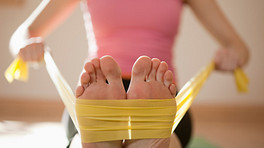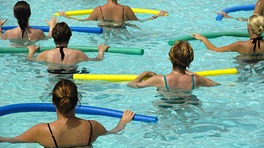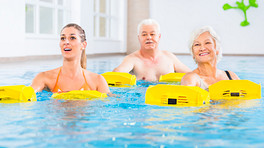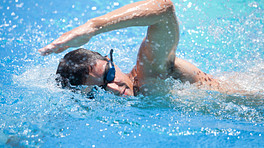Exercise is an integral part of any arthritis treatment program, as it helps to strengthen and stabilize the joints, preventing further damage. For patients suffering from osteoarthritis, a degenerative condition of the joints, the pain brought on by regular exercise can feel unbearable. Water therapy is an excellent option for patients with osteoarthritis of the knees, hip osteoarthritis, and spinal osteoarthritis due to the decreased pressure placed on the joints.
Osteoarthritis is a degenerative disease that results from the breakdown of the cartilage that covers the ends of joints and facilitates smooth movement, in addition to providing a shock-absorbing surface. When the cartilage is no longer there, the uneven ends of adjacent bones will rub together producing pain, stiffness, and swelling in the joint. Due to the loss of shock-absorbing capabilities, relatively high impact activities, such as walking, running or other forms of aerobic exercise, only seem to worsen these symptoms.
Also called pool therapy, or sometimes aqua therapy or hydrotherapy, water therapy provides an ideal environment for patients to exercise because the buoyant force of water counteracts the downward pull of gravity, thus reducing the weight placed on the joints. Studies have shown that up to 50% of body weight is supported in waist-deep water, while 90% of weight is supported in neck-deep water.
See Hydrotherapy for Arthritis
Patients suffering from osteoarthritis are often unable to perform traditional land-based exercises due to increased pain created by the impact. In a supportive medium such as water, patients can perform similar strengthening or endurance exercises with the benefit of gentle resistance, and also a reduction in pain.
Exercises often resemble those performed in traditional land-based physical therapy and exercise programs. Examples of typical exercises include:
- Stretching of the hamstrings, low back, upper back, and neck.
- Strengthening exercises, such as using foam barbells that work against the resistance of the water.
- Aerobics, such as water walking, cross-country skiing, or slow jogging to loosen the lower back and hips.
- Ai Chi, a hybrid form of Tai Chi that uses slow, gentle movements and a focus on relaxation and controlled breathing to develop balance, strength, and joint flexibility.
In addition to the reduction of symptoms, water therapy also has important effects on the cardiovascular system. Patients have demonstrated improved heart function and improved circulation to the muscles and joints, which helps build strength and facilitate any healing processes.











